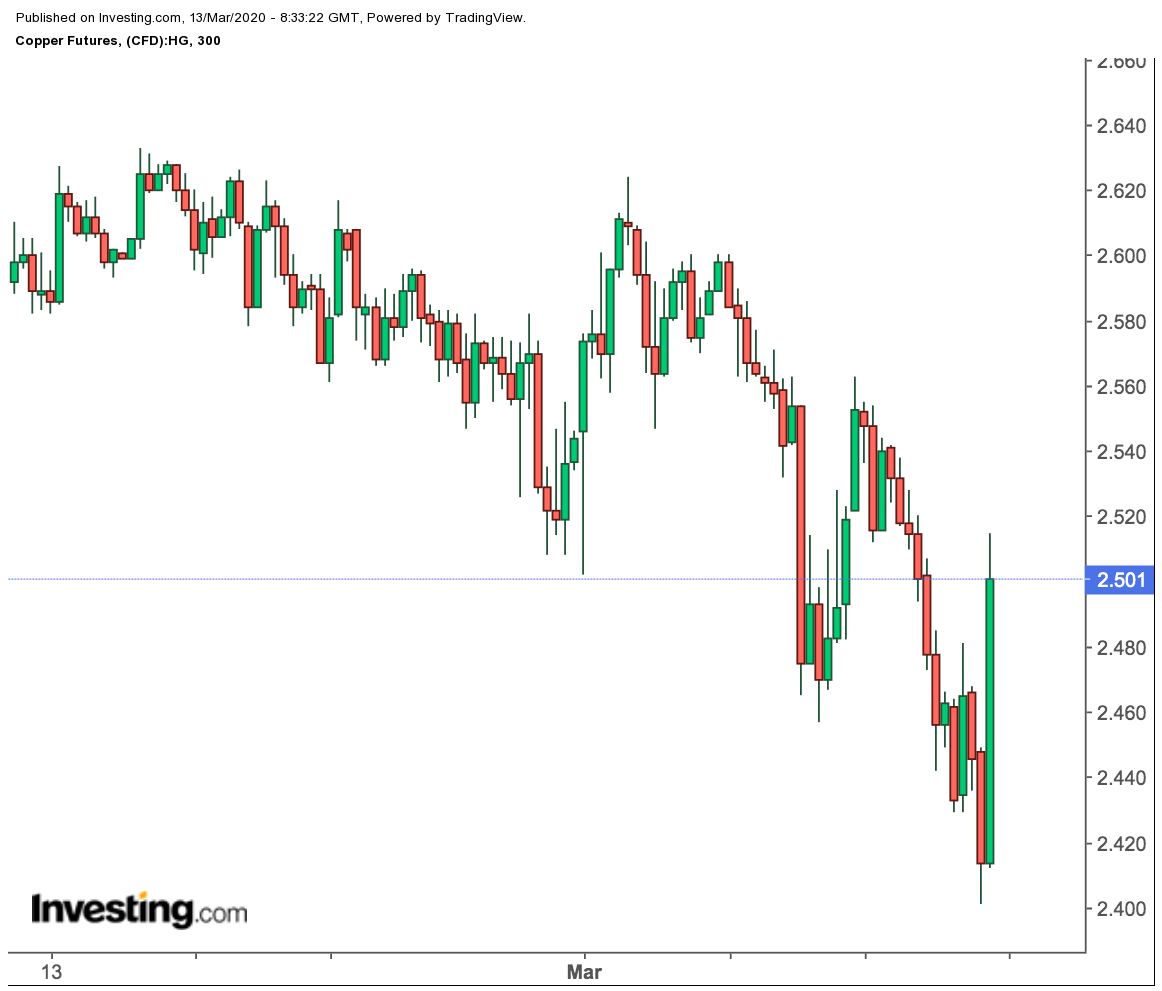United Homes Group stock plunges after Nikki Haley, directors resign
Fitch is making a bold bet on China and copper. Wall Street and the red metal’s charts tell a different story for now.
As stocks and markets the world over experienced for a second time this week brutal selloffs comparable only to 1987’s “Black Monday,” quickly forgotten was a bet made by Fitch that copper will rebound in coming months on China’s plan for an aggressive economic reboot from the coronavirus.
In revising their 2020 copper price forecast to $5,900 a tonne, from a previous $5,700, Fitch’s analysts bet that increased stimulus by the Chinese government will soon flow into infrastructure projects, boosting demand for copper which will be greatly needed for the rebuilding of the second-biggest economy in the world.
The analysts said they expected the majority of shuttered manufacturing hubs and supply chains in China to be freed of current pandemic-related restrictions by April, paving the way for higher copper demand later in the year.
Logic Vs Market Dynamics
It was a logical outlook that tied the impending revival of the world’s largest commodities buyer with the most largely used industrial metal.
Yet there was a problem with Fitch’s outlook: It was published last Friday, hours before the collapse of talks between Russia and Saudi Arabia to expand their OPEC+ deal on oil production cuts. Those talks were meant to have resulted in higher prices for crude. Instead, when they failed, an enraged Riyadh said it will flood the world with all the oil it could to grab more market share for itself.
Crude prices crashed 25% Monday in the worst plunge in nearly 30 years, as a direct result of the Saudi vow to create a glut. The selloff in oil crossed over into equities, which were already hit by the coronavirus crisis, turning Wall Street into a bear market.
In copper’s case, the benchmark three-month contract on the London Metal Exchange settled on Friday at $5,631.75 a ton. By Thursday, it had lost more than $190, and by Friday’s early trade in Asia, it hovered under $5,450. That already puts it nearly $500 below the Fitch target.
Copper’s Current Charts Don’t Look Good
“Typically, when discussing the likelihood of an oncoming recession and referencing futures markets, you will hear a whole lot about treasuries spreads and yield curves,” said Eric Scoles, commodities strategist at RJO Futures in Chicago.
“However, what has been standing out to me is the copper charts,” said Scoles, referring to price graphs for New York-traded copper futures, which he said showed “a massive multi-year head and shoulders pattern” forming between November 2016 and current prices. The November 2016 milestone is critical because that was when New York-traded copper hit its previous low of $2.20 per lb, compared with this week’s bottom of $2.40.
“Because copper represents construction, it represents industry, and its demand is strongly correlated with economic expansion and growth globally,” said Scoles.
He adds:
“If this developing chart pattern indicates the potential for copper prices to fall dramatically and for an extended period, I don't think it will be because of an explosion in copper production, rather it would be from the shriveling of demand. If economic expansion directly increases demand and drives the price of this commodity up, then what pushes it down will likely be a recession.”
Despite its credentials as the world’s leading industrial metal, copper prices have mostly suffered in the past two decades.
World Bank statistics show that while the global economy grew by a compounded 30% between 2009 and 2019 — or an average of 3% per annum — copper fell 15% instead, sliding from $3.33 per lb to $2.83 in U.S. futures trade.
Could China Alone Do It For Copper and the World?
In their outlook from last Friday, Fitch’s analysts said they expected China to cushion the impact from the coronavirus outbreak by instituting aggressive stimulus measures that would maintain Beijing’s goal of doubling the country’s GDP by end-2020 from the 2010 level.
The front loading of Chinese infrastructure projects and tax and fee cuts to vulnerable sectors will lead to increased demand for copper, they said, adding that copper supply deficits in the power and autos sector will also keep the metal’s prices supported through 2020.
Already, China is bouncing back faster from the pandemic than the rest of the world, with just 21 new cases and eight deaths reported on Thursday compared to the hundreds of new infections and dozens of fatalities witnessed each day in earlier weeks.
But could China on its own save us too from a recession if growth in the rest of the world — particularly, the United States — slowed?
Possibly, says a Financial Times analysis this week that underscores China’s resolve in not letting the coronavirus create the first quarter of zero or negative growth since the cultural revolution of Mao Zedong.
Highlighting the incredible recovery work underway in China, the FT cited as example the district of Qian’an in Tangshan, an industrial hub east of Beijing in Hebei province, that produces about 10% of the country’s {{996702|steel} and was a crucial source of the metal for global markets.
“Trucks enter Qian’an carrying coking coal and iron ore, and exit loaded with steel,” the FT said.
“If the district’s mills can raise production quickly — as extreme measures taken to contain China’s coronavirus epidemic are eased — it will suggest that the short, sharp shock to the world’s second-largest economy since January might well be followed by a second-quarter rebound — the much vaunted ‘V-shaped recovery’.”
And it’s not just an industrial rebound that’s shaping up.
Apple (NASDAQ:AAPL) announced on Thursday that it had reopened all 42 of its stores in China that were closed for the past month due to the pandemic. For China watchers, the takeaway was clear: Apple’s third biggest market was back in business. That could only mean one thing — the recovery is taking shape.
